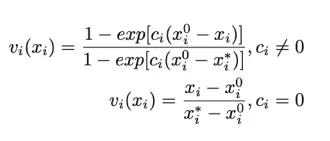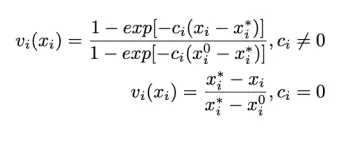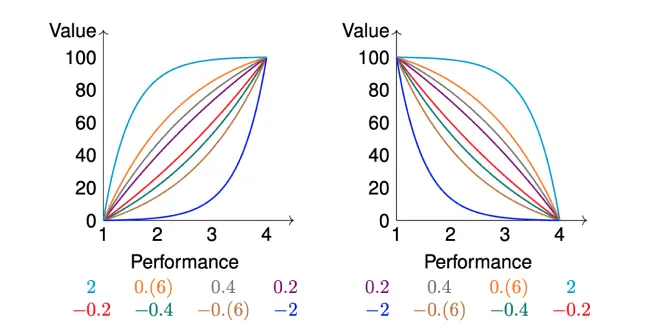Fit Delta Function
Introduction
This online software allows you to fit a value function, defined by a set of points, to a function that respects the constant trade-off attitude property
A value function is a function that assigns a value to a given performance. When using the MACBETH method, we can say that the obtained value functions are defined by a set of points in the form (performance, value). These value functions are thus defined in a piecewise linear way.
Regarding the shape of the value function, it can be classified as concave, convex or linear.

Methodology
The functions are defined as follows, with c being the trade-off attitude constant. On the left you can see the expressions and on the right the graphical representation of the functions. The function is fitted using the least squared differences method.
 Decreasing Function:
Decreasing Function:

Graph of the delta function for different values of c (differently colored values of c correspond to differently colored lines in the graph). Increasing function on the left, decreasing function on the right.
Usage
To use the application, follow these steps:
- Input the points as a list of pairs of (performance, value) in the box below.
Example 1: (0, 100), (1, 37.5), (2, 12.5), (3, 0)
Example 2: (0, 0), (1, 12.5), (2, 37.5), (3, 100)
- Click the Fit Delta Function button and see the result in the graph.
Input
Input a set of points:
Result
c = NaN
R2 = NaN
Get value for a given performance:
Performance =--> value = ?